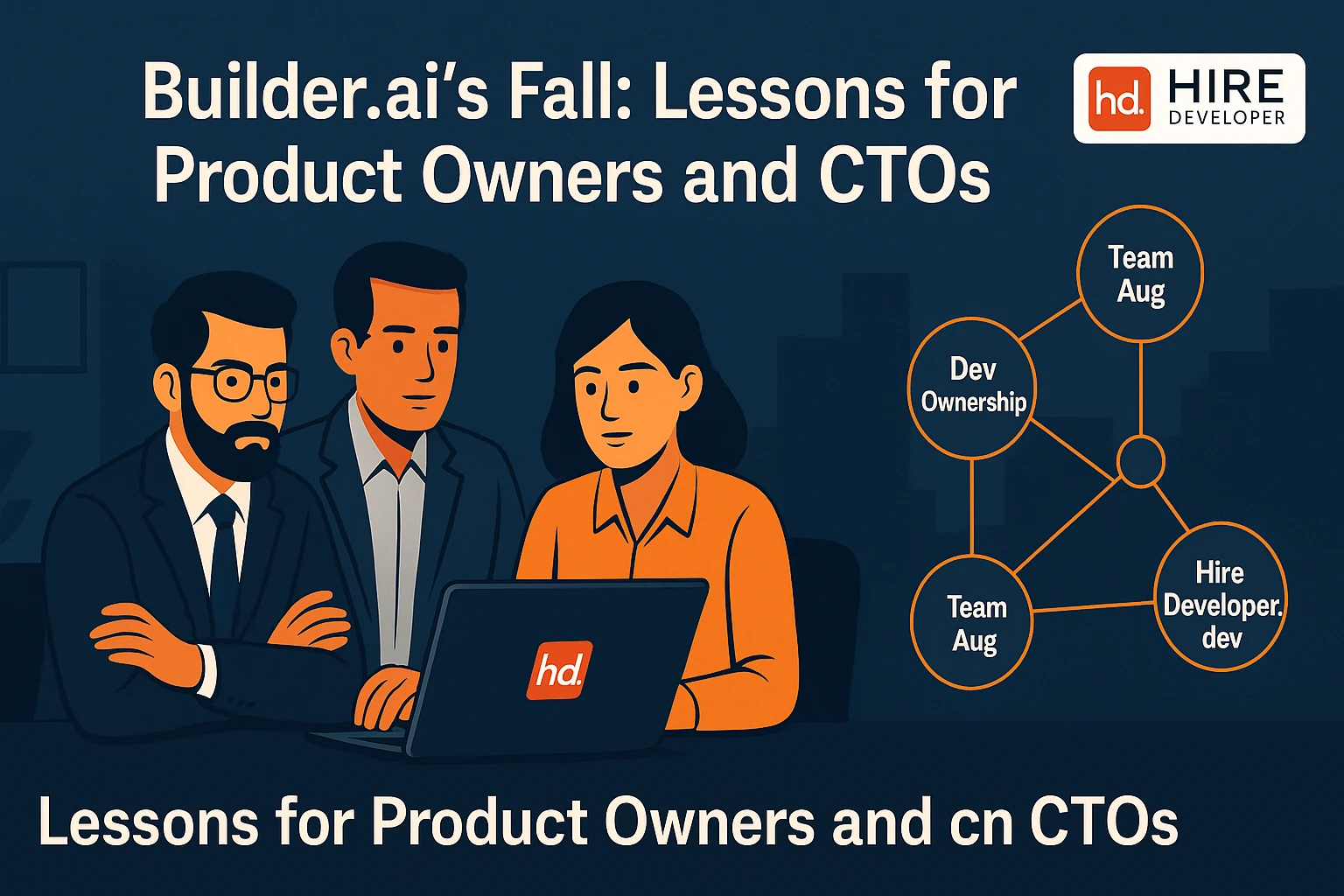“We thought they had it under control. We were wrong.”
That’s the sentence we’ve heard from product leads and CTOs affected by Builder.ai’s shutdown. And they weren’t naive, they were promised delivery, automation, scale, and support.
But when the platform folded, what got exposed wasn’t just financial missteps; it was architectural overreach, platform opacity, and a complete breakdown of control.
This post is for the product leads, tech managers, and CTOs, the ones who now carry the burden of finding a way forward.
The Lesson of Control vs. Convenience
Builder.ai was convenient. But control? That was hidden.
When your development partner owns:
- The deployment process.
- The source code location.
- The team’s structure.
- And the tech stack decisions.
…you’re not managing a product. You’re trusting a system to build your company’s foundation without visibility.
Product leaders learned: convenience without control is not a shortcut; it’s a gamble.
The Fall Exposed a Fundamental Shift: The Need for Hybrid Leadership
Modern product teams don’t just need great UX or delivery pipelines, they need real-time feedback loops between idea → architecture, → delivery.
What failed with Builder.ai:
- Black-box architecture.
- No direct access to engineering.
- Delayed iterations.
- No recovery pathway when support is stopped.
This isn’t just a vendor issue. It’s a leadership wake-up call.
What CTOs Should Do Differently Moving Forward
1. Maintain Git & Infra Access from Day 1
You should never depend on emailed builds or proprietary dashboards.
Separate Strategy from Execution
Keep product strategy in-house and use augmentation to extend execution, not to outsource accountability.
Build with People, Not Platforms
AI can assist. Dashboards can help. But product velocity is built by humans with context.
Why Team Augmentation Fits the 2025 CTO Model
- You get custom-selected devs that report directly to you.
- You control sprint structure, QA, and releases.
- You maintain IP, velocity, and scalability.
HireDeveloper.Dev offers staff augmentation and project team setups that enable tech leads to lead, rather than chase status updates from opaque systems.
This Wasn’t Just a Platform Failure: It Was a Model Breakdown
Builder.ai was a reflection of what happens when you:
- Buy into the buzz.
- Ignore visibility.
- Over-prioritise speed over structure.
Let this be the turning point: CTOs must rethink who owns the delivery pipeline, and how to make sure it doesn’t disappear when headlines change.
Need help rebuilding with a model that puts your team in charge?
Our clients include product leaders who took back control after platform failures. Talk to us about augmenting your tech team now!
Related Resources:
- What Happened to Builder.ai? A Breakdown for Startup Founders
- How Builder.AI’s Collapse Shook the Startup World?
- How to React When Your Development Partner Fails Overnight?
- The 5 Stages of Vendor Grief and How to Get Unstuck
- Builder.ai Migration Checklist: Save Your Code, Your Time, Your Product
- You Don’t Need to Start Over How to Transfer Your Project Safely
- From Panic to Progress, Real Strategies to Move on from Builder.ai
- Why Moving Fast Now After Builder.ai’s Collapse Will Save You Months Later
- How HireDeveloper.Dev Helps Builder.ai Clients Rebuild with Confidence
- Builder.ai vs. Human-Led Dev Teams: What We’ve Learned
- No More Black Boxes: The Power of Developer Transparency
- AI Was the Hype: Human Execution Is the Reality
- In Crisis, Founders Need More Than Just Tech: They Need Trust
- Why Owning Your Codebase Is Non-Negotiable in 2025
- Avoiding the Next Builder.ai: Red Flags Every Buyer Should Watch For
- From Locked to Liberated: How We Helped Former Builder.ai Clients Reclaim Control
- The Myth of One-Click Apps: Why Custom Always Wins in the Long Run
- What Every Investor Wants to Know: Technical Due Diligence After Builder.ai
- From Recovery to Resilience: A Blueprint for Building Post-Builder.ai

